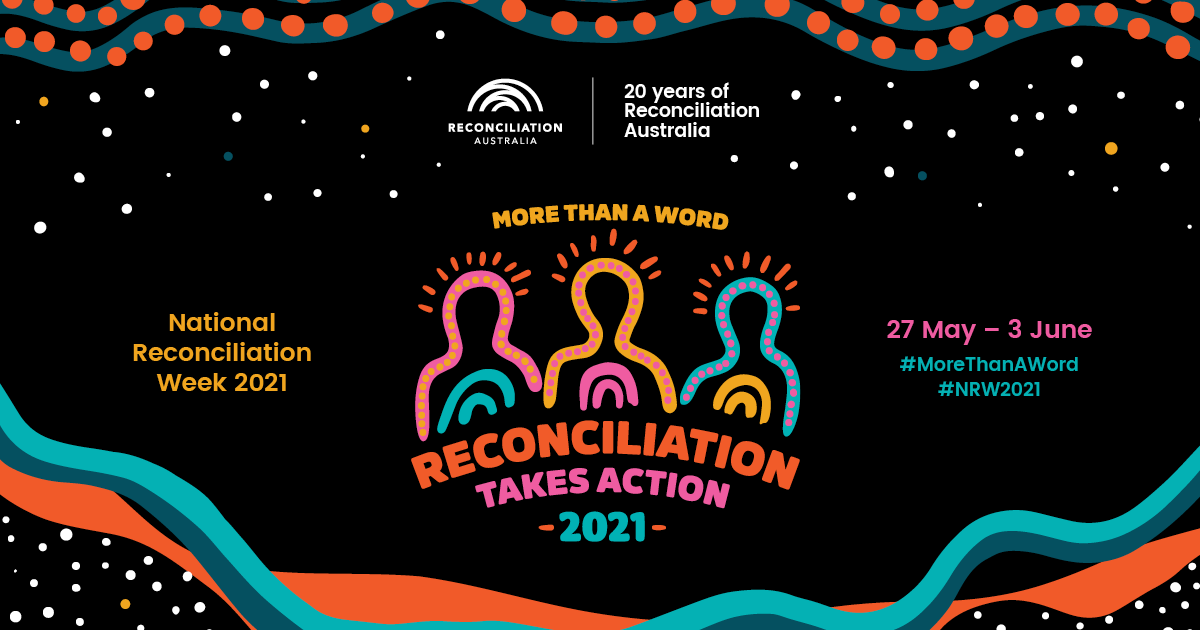Working towards closing the gap for our First Nations people living with blood cancer
As we recognise Reconciliation Week, we recognise the disparities in health outcomes for our First Nations people and the work we need to do, to achieve reconciliation.

We acknowledge this land’s Traditional Owners, and pay our respects to Elders past, present and emerging.
* Please note, this post discusses the survival outcomes of Indigenous Australians and may be distressing to our First Nations people.
Reconciliation is more than a word. Reconciliation requires acknowledgement. It requires space for listening and for our First Nations people to feel heard. Reconciliation requires consistent action.
The Leukaemia Foundation stands with Indigenous Australians to close the gap in health. We know we need to do better. We want to leverage our long legacy of caring for Australians in need to create targeted programs and services alongside developing deep, honest and robust relationships with the First Nations people of Australia, so that we can jointly tackle the burden of blood cancer and most importantly, save lives.
Currently, Indigenous men live 8.6 years less than non-Indigenous men, with Indigenous women living 7.8 years less than non-Indigenous women. Australian Institute of Health and Welfare (AIHW) data shows that there’s a significant disparity in survival rates across all cancers, with the survival rate for Indigenous Australians 48.1%, compared to 59.3% for non-Indigenous Australians.
Due to a range of complex issues, including racism, fear, lack of trust, stigma around cancer, remoteness and cultural misunderstandings from health services, as well as transport concerns and separation from family and country, our First Nations people aren’t accessing healthcare at the same rate as non-Indigenous Australians.
Across all cancer diagnoses, Indigenous Australians are 20% less likely to present to hospital than non-Indigenous Australians.
Those who are diagnosed with acute lymphoblastic leukaemia (ALL) are 40% less likely, and those diagnosed with non-Hodgkin’s lymphoma (NHL) are 60% less likely to access hospital. When First Nations people do present to hospital, they are more likely to be diagnosed at a more advanced state of cancer.
We know that where a person lives in Australia has a significant impact on their ability to access treatment and ultimately, their chance of surviving their blood cancer. We also know that our First Nations people are 30% less likely to be hospitalised if they live in regional, remote and very remote areas.
This must change.
We all have a role to play in achieving reconciliation. The Leukaemia Foundation is committed to ensuring that no matter where a person lives in Australia, no matter their age, gender or ethnicity, they have safe and equitable access to essential treatment, information, and supportive care. We recognise that we must place greater emphasis on these priorities for our First Nations people – and we will, through working with community, working with healthcare organisations, government, and of course, with First Nations people.
The National Strategic Action Plan for Blood Cancer recommends a range of actions to be implemented that will improve the delivery of cancer care services to our First Nations people.
Some of these include:
- Requiring education and training in culturally appropriate care, across all settings
- Monitoring the use of optimal care pathways for Indigenous peoples
- Increasing health service implementation research for Indigenous groups
- Supporting the development of an Aboriginal healthcare workforce, with specific cancer care skills
- Reforming the Patient Assisted Travel Scheme (PATS) to better accommodate culturally specific family travel and accommodation needs.
These are not quick or easy fixes – it will take consistent and persistent effort to ensure that our First Nations people not only have access to the best treatment for them, but that they survive their treatment, and live well beyond it.
We can, and will, do better.
The National Strategic Action Plan for Blood Cancer was published in 2020.
Last updated on January 11th, 2023
Developed by the Leukaemia Foundation in consultation with people living with a blood cancer, Leukaemia Foundation support staff, haematology nursing staff and/or Australian clinical haematologists. This content is provided for information purposes only and we urge you to always seek advice from a registered health care professional for diagnosis, treatment and answers to your medical questions, including the suitability of a particular therapy, service, product or treatment in your circumstances. The Leukaemia Foundation shall not bear any liability for any person relying on the materials contained on this website.